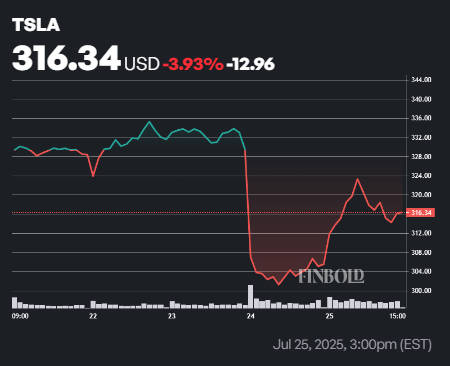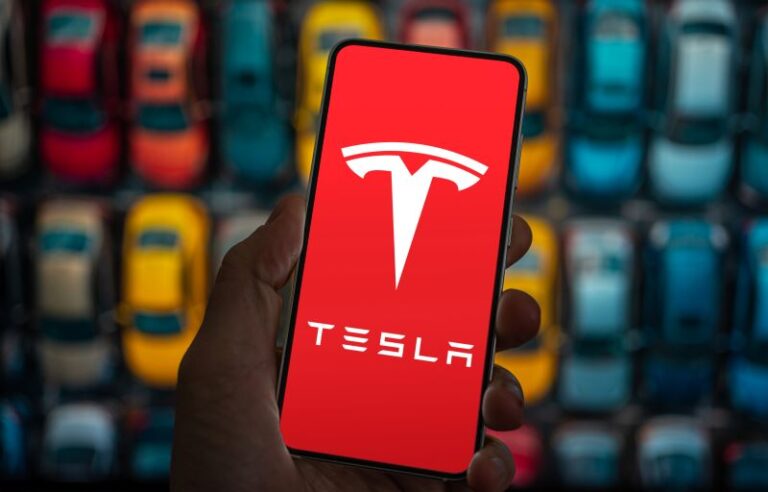The share price of electric vehicle (EV) manufacturer Tesla (NASDAQ: TSLA) has faced turbulence in recent weeks.
However, OpenAI’s artificial intelligence (AI) model, ChatGPT, suggests that the stock could gain momentum in the coming months and eventually reach $500.
For Tesla to hit that level, ChatGPT noted that the company will need a combination of earnings growth, successful product rollouts, and expansion into new markets.
The analysis projects that Tesla stock could climb to $500 between late 2026 and 2028. With shares currently trading at $316, that would represent a potential 58% upside.

Notably, Tesla stock has faced pressure to break below the $300 support level following disappointing earnings. In the second quarter of 2025, the Texas-based EV giant reported a 12% year-over-year decline in total revenue to $22.4 billion. Revenue from vehicle sales dropped 16% compared to the same period in 2024.
To justify the $500 TSLA share price valuation, the AI model estimates that Tesla would need to grow its market capitalization from approximately $1.01 trillion to $1.6 trillion, without significant share dilution.
This would require annual earnings of $16 billion to $20 billion, up from the current trailing range of $9 billion to $10 billion, and a sustained price-to-earnings ratio of 80 to 100.
Tesla’s stock path to $500
According to ChatGPT’s base-case scenario, Tesla is most likely to reach $500 between late 2026 and mid-2027. This would hinge on scaling a Robotaxi service in major U.S. cities, increasing revenue from Full Self-Driving software, and launching a mass-market vehicle such as the $25,000 Model 2.
Key catalysts include a successful Robotaxi rollout, widespread adoption of Tesla’s low-cost EV platform in 2026, and monetization of its AI and robotics efforts, particularly the Optimus humanoid robot and advances in FSD technology.
ChatGPT also outlined alternate timelines. In a bullish scenario, driven by faster progress in AI or favorable macro conditions, the $500 target could be reached as early as Q4 2025.
A more cautious outlook, weighed down by execution delays and market headwinds, suggests the milestone might not be achieved until between 2028 and 2030.
The model also flagged several risks, including regulatory hurdles for autonomous driving, rising competition from BYD and Rivian, weak international demand, and broader declines in tech stocks.
Featured image via Shutterstock









